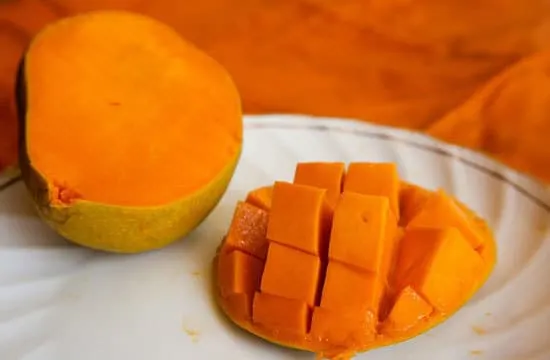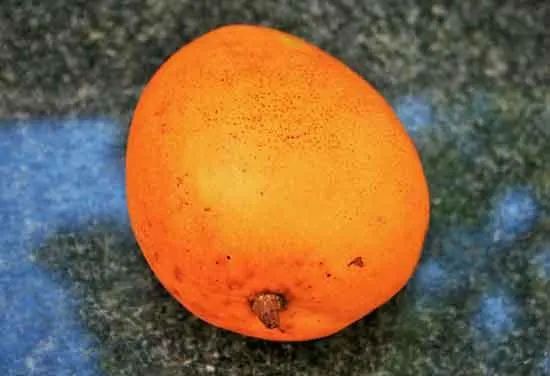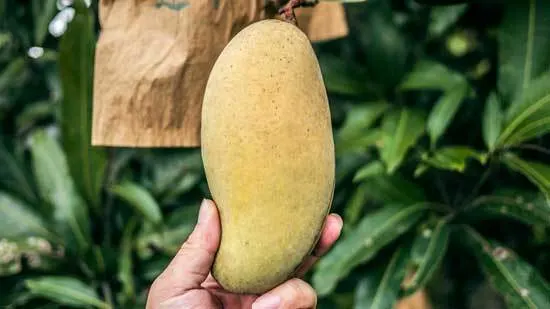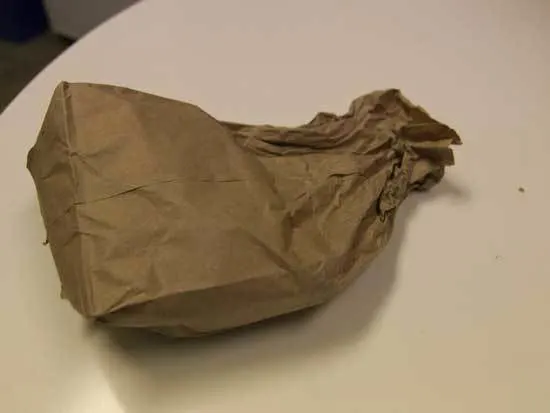Oh, How We All Love This Tropical Fruit!
The mango is not just the favorite of fruits of most people in the world but it also finds favor with the artists, the poets, and the writers! There are hundreds of odes written to this luscious fruit. There are as many metaphors as there are varieties of mangoes in the world!
And yes, the fruit is no cheap. This is why it is important that you know when to cut open a mango and find a ripe one inside. On the contrary, it is also important to know when it overripens. Over ripen mangoes can be extremely sweet to the extent that they begin tasting sour.
This is mainly because once the fruit overripens, it begins fermenting inside and ultimately rotting. It is a good idea to taste a bit of the over ripen mango. If it tastes sour, it is only good enough to bin.

How I Cut My Mangoes
When I am not using my sharp fruit knives, I prefer using Zyliss 3 in 1 mango slicer, peeler and pit remover. This all in one is such a handy tool, you will wonder why no one told you about it before! The micro serrated stainless steel blades make it so easy to go 1 2 3!!
How To Tell If Mangoes Are Ripe
Things that you will need:
- A brown paper bag
- An apple or a banana
What to Do
Say you have a rather big stash of mangoes this season and you are scared that if you let them ripen on their own, they may overripen or that you may not be able to eat them when the entire crate ripens all at the same time.
Here Is the Hack to Hasten the Ripening Process
This process helps you to have a good handle over the ripening of the mango. Simply place the unripe fruit in the paper bag for a couple of days. As fruits ripen, they give out a gas called ethylene.
Ethylene is responsible for triggering more of that hormone production which gets trapped in the paper bag. This helps the fruit to ripen faster than the ones kept outside.
Grandma’s hack: placing another fruit like the banana (most favored) can also help ripen the mango quicker because of the production of the hormone ethylene.
Unripe Mangoes Need to Be Stored Outside
The paper bag with the fruits needs to be stored outside the refrigerator and at room temperature. Unripe mangoes should never be stored inside the fridge because it not only delays their ripening, but there is a big chance that they may get spoilt even before ripening.
We once had a big mango stash from a neighbor’s orchard. We were so excited thinking about all the things that we would be making with them. The only catch was that we had no idea how to determine if they were ripe enough to rip open.
That is precisely how the idea for this blog was planted. We made amazing cold pressed mango juice with my Breville JE98 XL juice fountain that features a 3 inches wider chute. The micro mesh filter in the juicer extracts 50% more fibre, vitamins and minerals than other juicers.
A little research yielded on small and big hacks on how to tell if the mangoes are ripe so that you can either eat them or make juices and milkshakes with them or add them to your desserts. Let’s get started, shall we?
Method 1: The Appearance Test
The test observation lies in the fact that most mango varieties will ball up or come to a near consistent football-round shape when they ripen. Of course, there a few exceptions to this rule!
For instance, the Asian Alfonso will still maintain a slightly elongated shape even after it is completely ripe. A few other varieties like Kent, Tommy Atkins, and the Palmer will always have an oval appearance when they ripen. But this is a good beginner’s test.
Method 2: The Stem Test
This has been a sure-shot way so far. I have been correct nine out of ten times. It is a rather scientific method. When the mango is not ripe, the area around the stem is slightly flattened in appearance. This is the time that the sugars and the flesh are not developed or are developing.
Once the fruit ripens, the fruit becomes a little plumper, and this is especially obvious near the stem. It will give an appearance as it has significantly risen from its previous position.
Have you sometimes played with mangos and at times, sniffed them? The smell of the fruit is particularly strong near its stem. This is one of the reasons why we generally whiff mangoes before we cart them at stores.
Method 3: The Speckles Test
Most mango varieties available on the market will begin having speckles or some light brown marks on their skins. This may not be a conclusive indication of their ripening.
A lot of varieties of mango here do well with a speckles test. But there may be stray cases of no speckles on the skin but the mango being ripe inside.

Also, one particular variety called the Palmer always begins ripening with having yellowy spots on its skin. They may be hard to detect, but they will lead to doing the next test on them.
Method 4: The Touch Test
A ripe mango will give in where its flesh is, or you may create a light indent when you give light pressure with your touch. Always feel the fruit on its side where the flesh is more. A ripen mango is soft inside.You must take care to not press too hard on the sides, or you may bruise the fruit.
The best way to conduct this test is to hold the fruit in the hands and give very light pressure with the ball of your palms.

A very soft or squishy mango will mean that the fruit is overripe. You will then have to follow the instructions given above or your instincts in knowing if it is good to be consumed or not.
Method 5: The Weight Test
This test is more a reconfirmation test than anything else. A ripen mango is always heavier than the unripe one.
Conclusion
Now that you know how to determine if it’s ripe, we would love to know what lovely dishes you made with your mango stash this season. Like always, do not forget to like and share the blog post with friends and family whom you think would love to have this from you. Hasta la vista!

